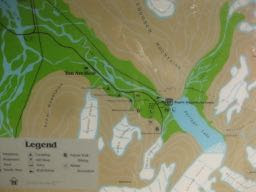I'm slowly moving out into a more normal life. Wednesday I met with the Alaska Redistricting Board Executive Director, Peter Torkelson, and the Deputy Director, TJ Presley.
Here's some of what we talked about.
1. This is a waiting period. The total number of Alaskans as of the 2020 census has come in. While the actual number is constantly changing, this is the number that will be used: 733,391. That means each district needs to be as close to 18,335 people as possible.
18,335 comes from dividing 733,391 by 40, the number of Alaska House seats. There are 20 Senate seats, each made up of two House seats. So Senate districts will be just about 36,670.
But the detailed numbers for each census tract are NOT yet available. Last time (2011) they came March 15. But because of the pandemic and other counting issues, it's taking longer this time. So the staff has some time as they await the data which is due maybe mid-August to beginning of September.
2. What they're doing while waiting for the Census numbers to come in? jjj
The two have been giving presentations to city councils around the state recently. Generally it's Peter or TJ. If a Board member is in the area they might drop by. They've been to Ketchikan, Kodiak, Barrow, Bethel, Soldotna and Valdez, and to Homer and Seward by zoom. A couple of places said they weren't interested in a presentation. Below is a copy of the slides they've been using. Remember that when they give the presentation they can talk and explain what this all means. But much of it is probably self explanatory. If you have question, contact the redistricting board staff.
Redistricting Introduction 6-16-21 by Steve on Scribd
An Anchorage presentation is set for June 25 - whoops, guess I missed it. But I think the Botanical Garden was a better choice anyway today. The Juneau presentation is set for August 9.
They've also been keeping up on redistricting news and technology and trying to make sure this round of redistricting goes as smoothly as possible.
3. Mapping Software Training - Monday - Wednesday June 28, 29, 30 at the LIO (Legislative Information Office). The public is invited to attend and watch. There won't be opportunities to use the software. There's nothing more boring than watching other people get software instruction when you don't have access to a computer with that software. However, the board is looking for other software that the public can use to make their own maps. They believe that if people can work with the actual data to make their own maps, they will have a better idea of the difficulties of trying to get 40 districts with 18,335 people that meet the other constitutional requirements of compactness, contiguity, and socio-economic integrity. (These are terms from the Alaska State Constitution.) There's more detail on this in a post from the previous redistricting board here. That post looks at Federal and State requirements. Scroll down for the State requirements.
Where:
- Anchorage Legislative Information Office
- 1500 W Benson Blvd, Anchorage, AK 99503
- Denali Conference Room, 1st floor
When:
- Monday, June 28 from 10am - Noon and 1:30 - 3:30pm (approximate)
- Tuesday, June 29 from 9:30am - Noon and 1:30 - 3:30pm (approximate)
- Wednesday, June 30 from 9:30am - Noon and 1:30 - 3:30pm (approximate)
There's more information on my Redistricting Board tab on top, or click here. It includes phone numbers to call in and I think you can watch it remotely - that's why it's in the LIO.
4. Testing the fairness of the maps the Board makes.
We also talked about the Voting Rights Act consultant the Board chose. It seems that Michigan will use him too and the Republicans there are steamed. But given Michigan Republicans - remember they did a practice takeover of their capitol well before January 6 - that's probably a good sign. I mentioned that the VRA consultant is less important now that Alaska isn't required to get preclearance before deciding on their maps. But Peter and TJ disagreed, echoing one of the consultant candidates (they said), that Section 2 of the VRA still applies and requires that minority districts not be diminished.
We also talked about the impact of Ranked Choice Voting - since one of the VRA applicants mentioned they had someone who could analyze that. But there seems to be conflicting opinion on how that will affect minority voting.
They also mentioned that the Board isn't going to have political parties in the data so that they can't be accused of using it to manipulate the districts, though we all agreed that Alaska is small enough that lots of people have a sense of neighborhoods that are particularly partisan.
Also, they've agreed, as I understood it, not to have a policy of protecting incumbents.
5. Location of Alaska Redistricting Board Office
The Board's Office is in the University Mall, Room 141. This is the far south hallway. The DMV is on the east end. Didn't know there was a DMV there? Neither did I. It's where the UAA offices used to be. Which were where the University theaters used to be.
 The office space is sort of open concept. The previous Board had offices in the Sunshine Mall. I think they were smaller, but better configured. Maybe that even had some walls moved around. I don't know.
The office space is sort of open concept. The previous Board had offices in the Sunshine Mall. I think they were smaller, but better configured. Maybe that even had some walls moved around. I don't know.
Here's looking down the hall to the DMV. You get in through the South entrance to the mall.




































